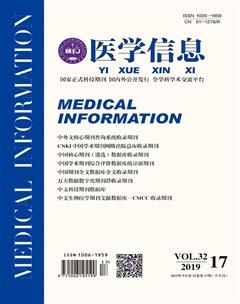某綜合醫(yī)院住院患者醫(yī)院感染現患率調查
張楠 白昊坤 趙懷

摘要:目的? 了解醫(yī)院感染現狀,分析相關危險因素,為醫(yī)院感染的預防提供依據。方法? 采用病歷調查和床旁調查相結合的方法,調查2018年5月24日0∶00~24∶00某院所有住院患者的醫(yī)院感染現狀,描述醫(yī)院感染分布情況,病原菌檢出情況以及抗生素使用情況,并進行醫(yī)院感染患者的危險因素分析。結果? 某院住院患者719例,實查率100.00%,醫(yī)院感染現患率為2.50%,其中重癥醫(yī)學科(ICU)、神經外科現患率較高,分別為16.67%、13.33%,主要為下呼吸道感染,占55.56%。檢出病原體13株,G-菌最高(61.54%),其次為真菌(38.46%)。全院抗菌藥物使用率為33.94%,治療用藥占79.10%;單一用藥占90.57%,用藥標本送檢率為51.55%。年齡(<2歲或>60歲)、使用呼吸機、使用泌尿道插管、動靜脈插管,差異均有統(tǒng)計學意義(P<0.05),是醫(yī)院感染的危險因素。結論? 年齡(<2歲或>60歲)、使用呼吸機、動靜脈插管、泌尿道插管是醫(yī)院感染的危險因素,應重點加強對長期住院患者的管理,加強導管相關感染的防控工作,加強重點環(huán)節(jié)、危險因素的監(jiān)管防控力度,確保導管相關感染集束式防控措施的落實,醫(yī)務人員加強手衛(wèi)生、合理使用抗菌藥物、嚴格無菌操作技術規(guī)程。
關鍵詞:醫(yī)院感染;現患率;危險因素;病原菌
Abstract:Objective? Understand the status of nosocomial infections, analyze relevant risk factors, and provide evidence for prevention of nosocomial infections. Methods? The medical records and bedside survey were combined to investigate the status of nosocomial infection in hospitals from 0:00 to 24:00 in 24 May 2018, describing the distribution of nosocomial infections, pathogen detection rate and antibiotic use. And conduct risk factor analysis of patients with nosocomial infections. Results? There were 719 inpatients in a hospital, the actual investigation rate was 100.00%, and the prevalence rate of nosocomial infection was 2.50%. Among them, the prevalence rate of severe medicine (ICU) and neurosurgery was 16.67% and 13.33%, respectively, mainly for lower respiratory tract infection. , accounting for 55.56%. 13 strains of pathogens were detected, the highest G- bacteria (61.54%), followed by fungi (38.46%). The use rate of antibacterial drugs in the hospital was 33.94%, and the therapeutic drugs accounted for 79.10%; the single drugs accounted for 90.57%, and the drug samples were 51.55%. Age (<2 years old or >60 years old), use of ventilator, use of urinary catheterization, arteriovenous intubation, the difference was statistically significant (P<0.05), is a risk factor for nosocomial infection. Conclusion? Age (<2 years old or >60 years old), use of ventilator, arteriovenous intubation, and urinary catheterization are risk factors for nosocomial infection. It is important to strengthen the management of long-term hospitalized patients and strengthen the prevention and control of catheter-related infections. Strengthen the supervision and prevention of key links and risk factors, ensure the implementation of cluster-related infection prevention and control measures, and strengthen the hand hygiene, rational use of antibacterial drugs, and strict aseptic operation technical regulations.

